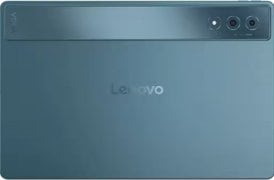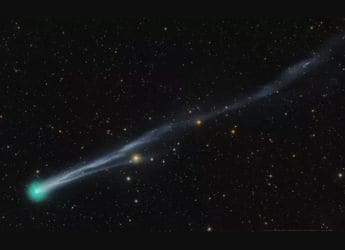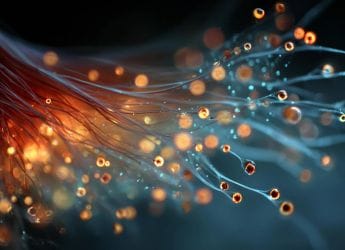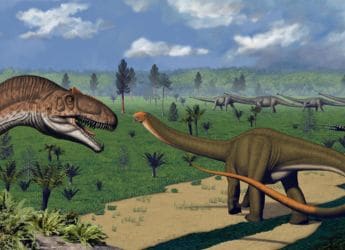- Home
- Science
- Science News
- Astrophotographer Captures Stunning “Raging Baboon Nebula” in Deep Space
Astrophotographer Captures Stunning “Raging Baboon Nebula” in Deep Space
Astrophotographer Greg Meyer’s image of the “Raging Baboon Nebula” in Corona Australis reveals a baboon-like face with blue eyes and brown dust.

Photo Credit: Wikimedia Commons
NGC 2313 shows bright gas clouds illuminated by star V565
The face of a baboon is appearing in a new photo of a nebula, taken by astrophotographer Greg Meyer. It is known as the Raging Baboon Nebula, and it is located in Corona Australis, approximately 500 light-years away. The picture discloses bright blue eyes and dusty brown clouds forming the baboon-like face. It reminds even the observer of the colorful features of a mandrill, with the globular cluster NGC6723 (an area of hundreds of thousands of stars) being visible in the vicinity.
Imaging of the Rampaging Baboon Nebula
According to Space.com, this scene was shot by Meyer in a Starfront Observatory in Texas. This was captured with a 120mm Takahashi Esprit refractor and a QHY 268M camera in 13 nights, it took him to capture the nebula during the summer season in 2025. Overall, approximately 16.5 hours of exposure data had been gathered. The frames were then stacked by Meyer using software (Photoshop, Lightroom, PixInsight). His processing brings out the brown molecular dust (constituting the mouth) and the blue reflection nebulae (constituting the eyes), constituting the face of the baboon.
Cosmic Sculptures and Nebula Shapes
The nebulae are gas and dust clouds, which are formed under the influence of starlight and winds. The blue reflection nebulae (scatter starlight) are the eyes, and the dark absorption cloud is the mouth in the Baboon Nebula. Powerful stellar winds make structures in other locations as well: Hubble telescope images of Orion reveal a space jellyfish proplyd created by the wind of a large star. These clouds do not possess definite lines. As an example, the well-known Horsehead Nebula is Barnard 33, and the Skull Nebula is the NGC 246.
For the latest tech news and reviews, follow Gadgets 360 on X, Facebook, WhatsApp, Threads and Google News. For the latest videos on gadgets and tech, subscribe to our YouTube channel. If you want to know everything about top influencers, follow our in-house Who'sThat360 on Instagram and YouTube.
- Samsung Galaxy Unpacked 2025
- ChatGPT
- Redmi Note 14 Pro+
- iPhone 16
- Apple Vision Pro
- Oneplus 12
- OnePlus Nord CE 3 Lite 5G
- iPhone 13
- Xiaomi 14 Pro
- Oppo Find N3
- Tecno Spark Go (2023)
- Realme V30
- Best Phones Under 25000
- Samsung Galaxy S24 Series
- Cryptocurrency
- iQoo 12
- Samsung Galaxy S24 Ultra
- Giottus
- Samsung Galaxy Z Flip 5
- Apple 'Scary Fast'
- Housefull 5
- GoPro Hero 12 Black Review
- Invincible Season 2
- JioGlass
- HD Ready TV
- Laptop Under 50000
- Smartwatch Under 10000
- Latest Mobile Phones
- Compare Phones
- Nubia Z80 Ultra
- Realme GT 8
- Realme GT 8 Pro
- iQOO 15
- Red Magic 11 Pro
- Red Magic 11 Pro+
- Huawei Nova Flip S
- Huawei Nova 14 Vitality Edition
- MacBook Pro 14-inch (M5, 2025)
- Asus Vivobook S16 (S3607QA)
- iQOO Pad 5e
- OPPO Pad 5
- iQOO Watch GT 2
- OPPO Watch S
- Xiaomi Xiaomi TV S Pro Mini LED 55 2026
- Xiaomi TV S Pro Mini LED 65 2026
- Asus ROG Ally
- Nintendo Switch Lite
- Haier 1.6 Ton 5 Star Inverter Split AC (HSU19G-MZAID5BN-INV)
- Haier 1.6 Ton 5 Star Inverter Split AC (HSU19G-MZAIM5BN-INV)












